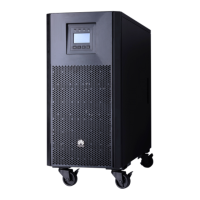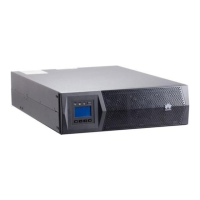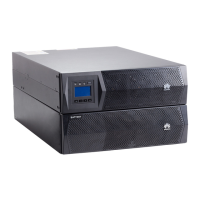Alarm
Name
Alar
m ID
Alarm
Cause
ID
Repair Proposal
Possible cause: The mains voltage exceeds 280 V.
Measure: Check the mains input voltage, If the voltage exceeds
272 V, wait for the mains to recover.
Possible cause: The mains voltage is less than 80 V. Measure:
Check the mains input voltage, if the voltage is less than 88 V,
wait for the mains to recover.
Possible cause: The input fuse is blown.
Measure: Check the status of the input fuse.
Possible cause: The mains frequency is out of the 45–55 Hz
(mapping to 50 Hz) or 55–65 Hz (mapping to 60 Hz) range.
Measure: Check the mains input frequency. If the frequency is
out of the normal range, wait for the mains to recover.
Possible cause: The input fuse is blown.
Measure: Check the status of input fuses.
Possible cause: The mains voltage is frequently abnormal.
Measure: Check the mains input voltage. If the voltage is abnormal,
wait for the mains voltage to become normal and manually clear
the alarm.
Possible cause: The bypass input voltage is abnormal.
Measure: Check whether the bypass input voltage is out of the
specified range. If the voltage is out of the specified range, change
the range setting or wait for the bypass input to recover.
Possible cause: The bypass frequency is out of the 45
–65 Hz (mapping to 60 Hz) range.
Measure: Check the bypass input frequency. If the frequency is out
of the normal range, wait for the bypass power supply to recover.
Possible cause: The positive and negative battery terminals are
reversely connected.
Measure: Check the battery installation, and install batteries again.
Possible cause: No batteries are connected.
Measure: Connect batteries.
Possible cause: The batteries are in poor contact.
Measure: Check the battery cable connection. If battery cables
are loose, tighten the cables.
18
1. For more alarm handling, see the
UPS2000-A-(6 kVA-10 kVA) User Manual
.
2. Clear automatically detected and manually cleared (ADMC) alarms as shown in the
figures below.
Alarm Handling

